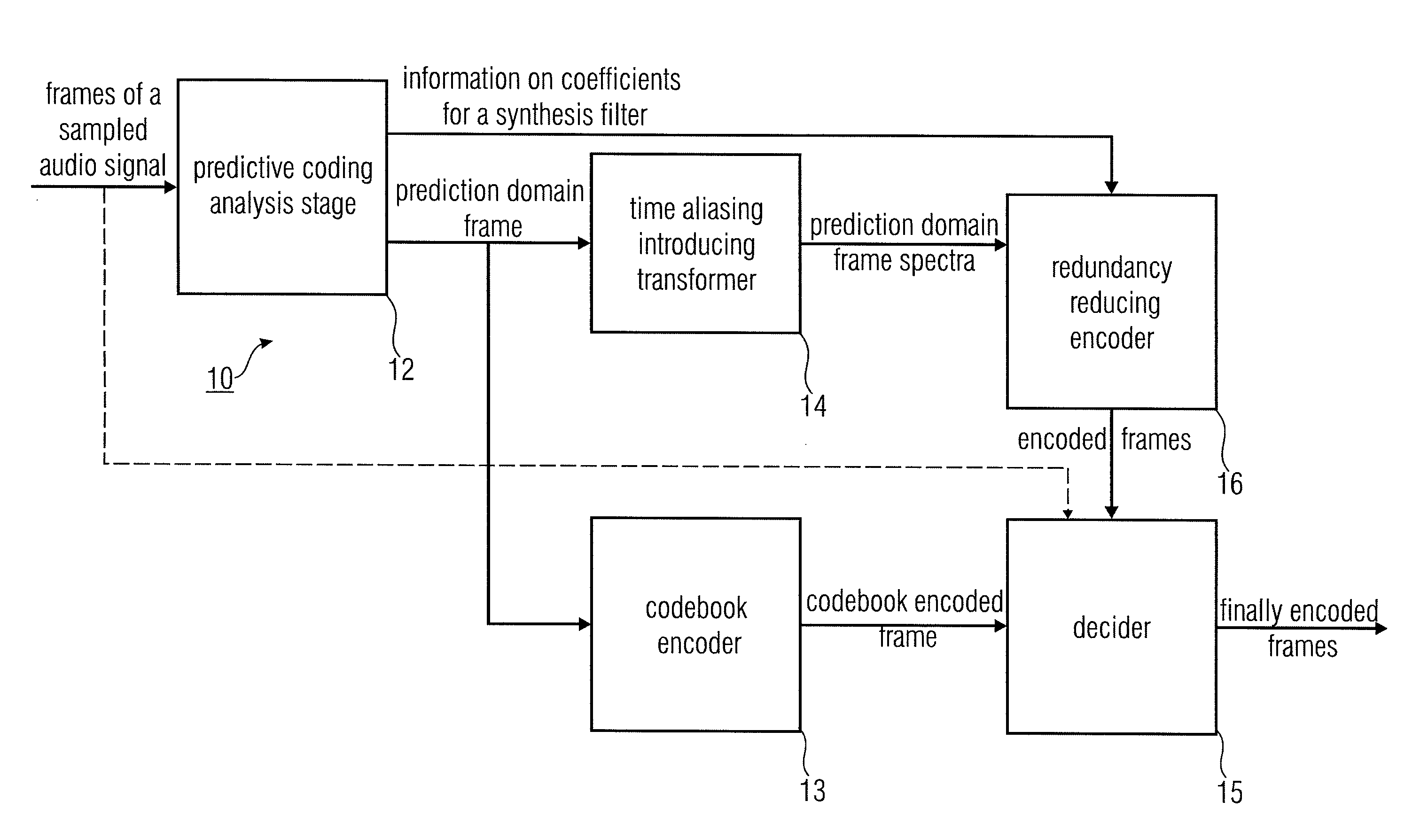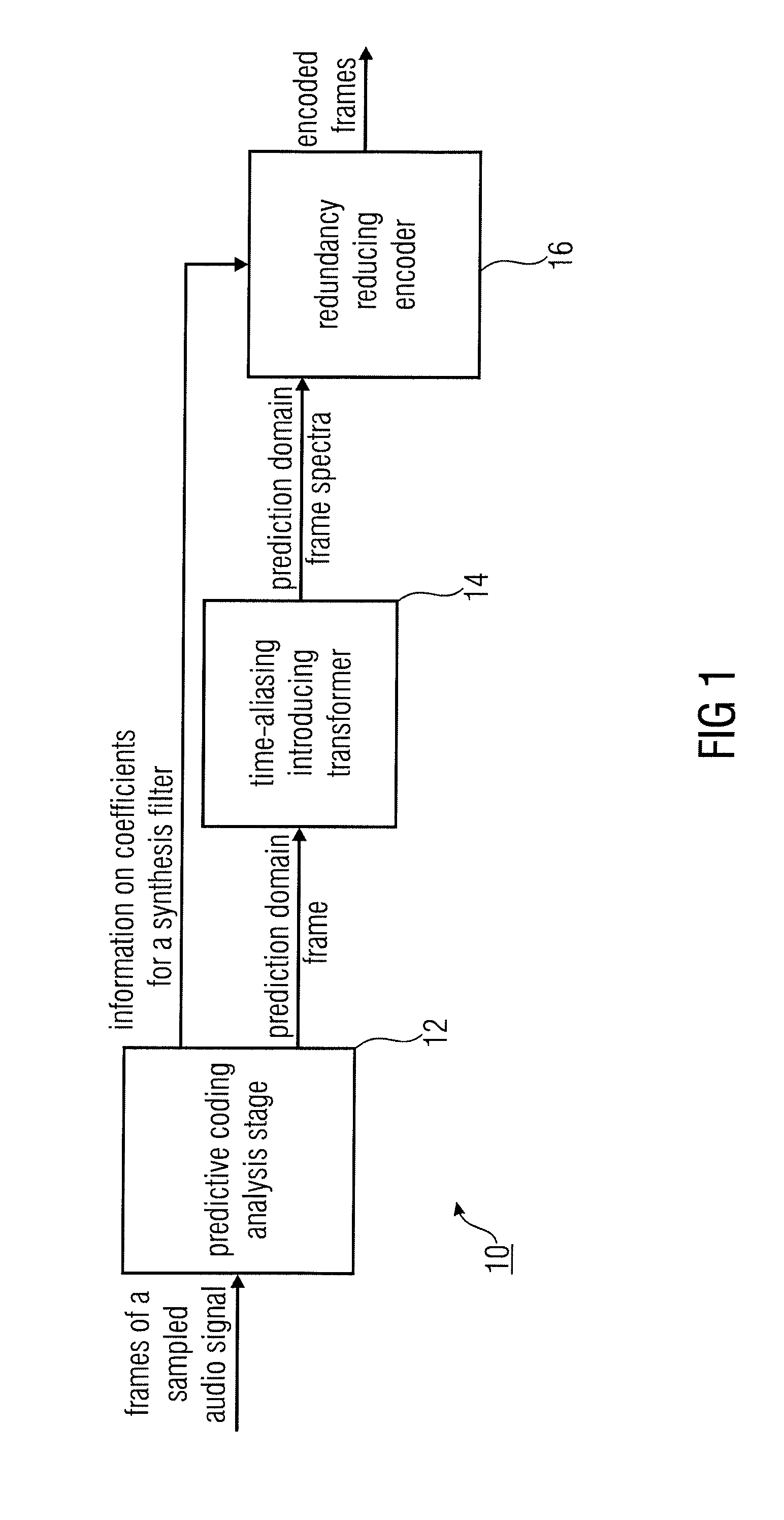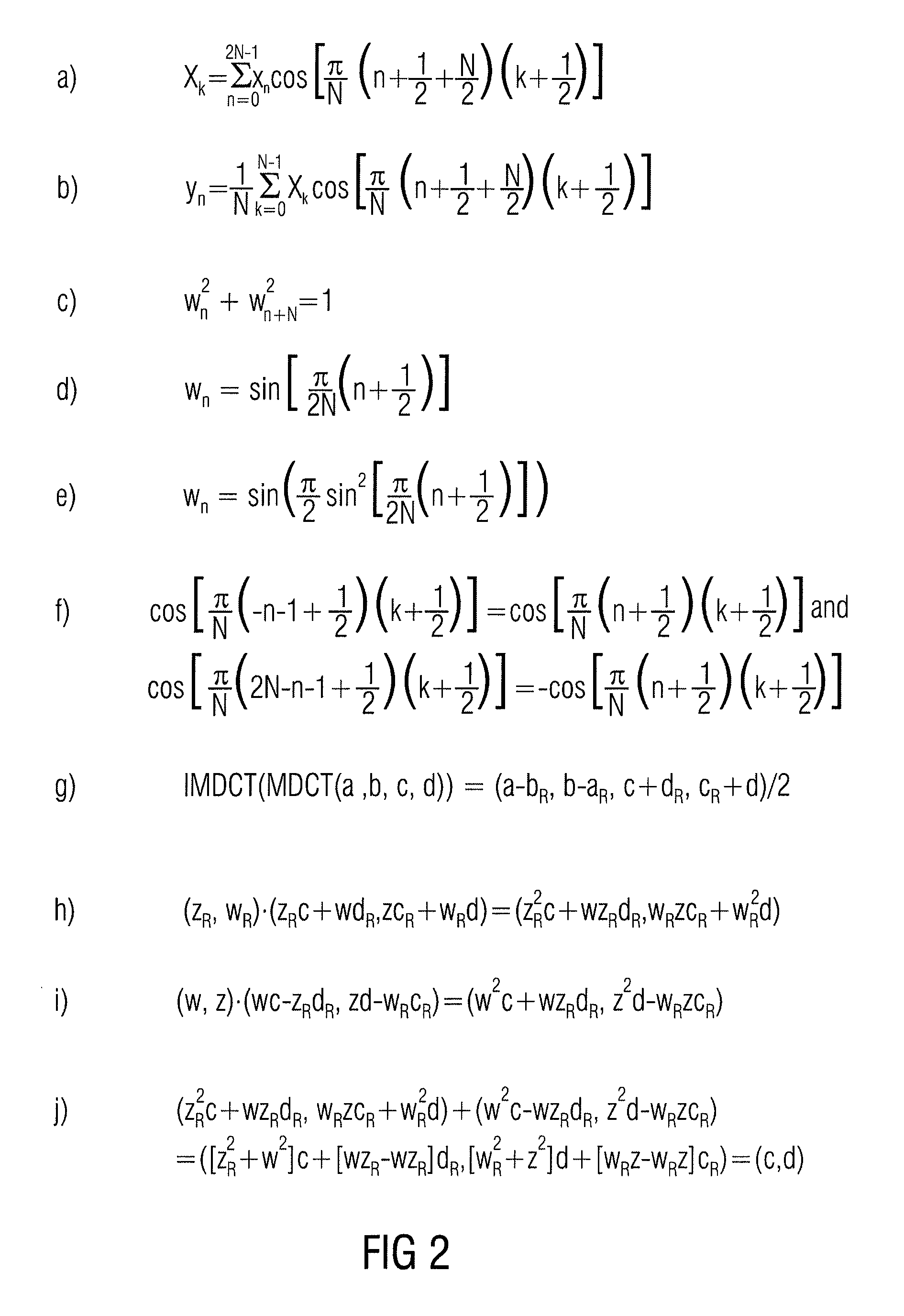Audio coder/decoder with predictive coding of synthesis filter and critically-sampled time aliasing of prediction domain frames
a synthesis filter and predictive coding technology, applied in the field of source coding, can solve the problems of lpc-based speech coders that usually do not achieve convincing results when applied to general music signals, general audio coders, or mpeg-2/4 advanced audio coding (aac) usually do not perform as well for speech signals at very low data rate, etc., to achieve efficient coding, longer overheads, and reduced overhead due to non-critical sampling. advantageously
- Summary
- Abstract
- Description
- Claims
- Application Information
AI Technical Summary
Benefits of technology
Problems solved by technology
Method used
Image
Examples
Embodiment Construction
[0070]In the following, embodiments of the present invention will be described in detail. It is to be noted, that the following embodiments shall not limit the scope of the invention, they shall be rather taken as possible realizations or implementations among many different embodiments.
[0071]FIG. 1 shows an audio encoder 10 adapted for encoding frames of a sampled audio signal to obtain encoded frames, wherein a frame comprises a number of time domain audio samples, the audio encoder 10 comprises a predictive coding analysis stage 12 for determining information on coefficients for a synthesis filter and a prediction domain frame based on frames of audio samples, for example, the prediction domain frame can be based on an excitation frame, the prediction domain frame may comprise samples or weighted samples of an LPC domain signal from which the excitation signal for the synthesis filter can be obtained. In other the words, in embodiments a prediction domain frame can be based on an...
PUM
 Login to View More
Login to View More Abstract
Description
Claims
Application Information
 Login to View More
Login to View More - R&D
- Intellectual Property
- Life Sciences
- Materials
- Tech Scout
- Unparalleled Data Quality
- Higher Quality Content
- 60% Fewer Hallucinations
Browse by: Latest US Patents, China's latest patents, Technical Efficacy Thesaurus, Application Domain, Technology Topic, Popular Technical Reports.
© 2025 PatSnap. All rights reserved.Legal|Privacy policy|Modern Slavery Act Transparency Statement|Sitemap|About US| Contact US: help@patsnap.com



